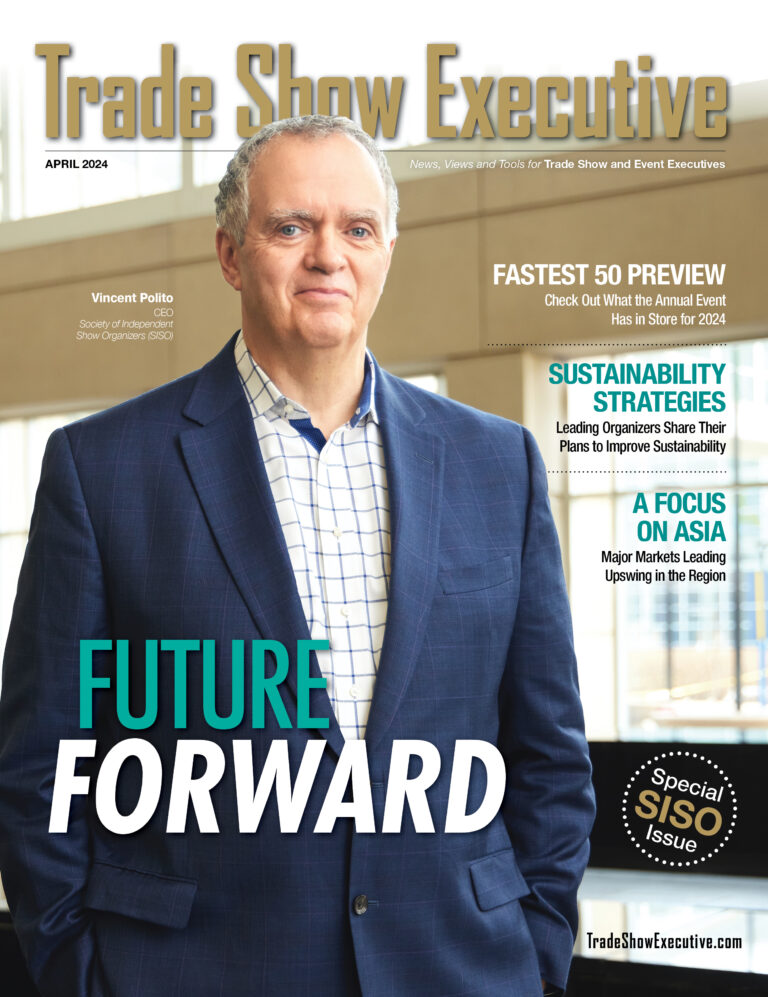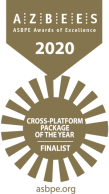 The latest research from Freeman Event Research found that around 80% of both attendees and exhibitors are ready to return to live events once they are vaccinated. And events are already taking place in destinations from Atlanta to Orlando, said April Walsh, Senior Market Manager, Industry Relations at Freeman, during a recent webinar called “Bringing Events Back Safely.”
The latest research from Freeman Event Research found that around 80% of both attendees and exhibitors are ready to return to live events once they are vaccinated. And events are already taking place in destinations from Atlanta to Orlando, said April Walsh, Senior Market Manager, Industry Relations at Freeman, during a recent webinar called “Bringing Events Back Safely.”
“We’re really seeing increased optimism and excitement across the industry,” said Dan Steiner, Vice President, Enterprise Risk Management, Freeman. “More and more of our clients are committing to upcoming events.” He credited the continuing increase to the vaccine rollout in the U.S., which is causing an uptick in travel at U.S. airports, in addition to early successes in the efforts of Go LIVE Together and the Exhibitions and Conferences Alliance (ECA) in educating legislators on the effective health practices already being deployed at events.
“We’ve been trying to be very proactive and showcasing all the work that we’ve done to make sure that anyone that arrives at an event is kept safe and also feels safe,” Steiner said. Ariane Coldiron, Senior Vice President, Account Direction, Freeman, added that Freeman and Go LIVE Together recently partnered with Epistemix, which employs epidemiologists to model anticipated risks of events based on show- and destination-specific parameters. Recent modeling by Epistemix found that a theoretical 20,000-person event, held in New York this summer, should have an infection rate of almost zero.
Related. The Data Shows the Time is Now to Plan for the Safe Reopening of Trade Shows
What About the Variants?

While the vaccine news has been mainly a positive for the return of in-person shows, the emergence of new COVID-19 variants is still worrisome. “Right now we’re in a little bit of a foot race between the percentage of the population that is vaccinated and the spread of the variants,” said Steiner.
He added, however, that “We could have 90% of the population vaccinated by July, dependent on people being willing to get the vaccine.” And when that happens, if it happens, the U.S. could follow the example of Israel, which has already inoculated around 90% of its population, and has seen a 90% reduction in infections. “So, it is working, and their economy is opening up big time,” he said.
Related. COVID Vaccine Rollout Fuels Optimism for the Trade Show Industry
Uncertainty still remains, however. Annemarie Roe, President, BaAM, A Freeman Company, said the current situation “is really directing a lot of the events that we’re part of to build contingency plans because we’re not sure what’s going to happen next.”
Reopening Considerations

Coldiron drew hope and inspiration from the recent Society of Independent Show Organizers (SISO) CEO Summit she attended in Amelia Island, Fla. “I found myself far more engaged in that live environment” than in myriad online events she had attended. “They followed every CDC guideline. I noticed it the first day, but then I didn’t think about the fact we were spaced apart — those things just became so natural for us.”
Key considerations the panelists outlined included:
- Understand what is right for your audience. “Understand your goals and what you’re trying to accomplish,” Coldiron said.
-

Mary Hiemstra, Senior Creative Director, Design, Freeman Make health and safety your North Star, said Mary Hiemstra, Senior Creative Director, Design, Freeman. “Our teams base every consideration on health and safety. People are really excited and anxious and eager to get back to live events — which is fantastic for all of us. We want to make sure we maintain that excitement and that comfort level by considering health and safety into every experience, even if it’s not visible.” Take registration, for example. The industry was already moving toward advance registration and touchless reg on site before COVID, and you can expect that to become mainstream in short order, the panelists said.
- Build a policy for risk assessments that meets the needs of the event. “This allows us to build an event operations plan around the policy decisions,” said Roe.
- Communicate early and often. “Once you determine your strategy, communication is the most important thing you can do,” said Coldiron. “We found that 83% of attendees really hone in on the details of how the event plans to handle any health concerns one to three months out,” she said. “It’s important that people have all the information they need in a timely fashion to determine what’s right for them. Having those details and communicating those plans early and often is going to save you a lot of heartache in the long run.” Roe suggested looking at major sports team websites as examples of how to provide well-made health and safety messaging in a simple drop-down menu.

Annemarie Roe, President, BaAM, A Freeman Company Also, include staff in those communications plans, she added. “Communicate to the workers what the policies were about traveling, accommodations, meals, and what the process would be coming into the venue.”
- Rethink your networking functions. Hiemstra said it’s important to consider the spacing and density of furniture (which should also be easy to clean) in networking lounges. Partitions and masking can create big audio challenges that should be addressed up front.Take your networking functions outside, if possible, she added. “Transmission is far lower to none outside of a venue, and people love to be outside, so if you have that opportunity, establish networking zones in outdoor areas.”
- Establish a learning path for attendees. If you determine a pathway where attendees can experience the event alongside industry colleagues with similar roles and interests, it delivers a built-in element of community, and helps facilitate both networking and crowd control, said Hiemstra.
- Develop a plan for venue entry. This could be as simple as just adding staff to demonstrate the fundamental rules as people are gathering, said Roe.
- Don’t forget to include your remote audience in the full event experience. “By engaging on a digital level continuously throughout the event, attendees become comfortable with that method of communication,” said Hiemstra. Provide the opportunity for on-site attendees to comment via an app, while remote attendees can also comment from home. Making sure facilitators are considering comments and questions from both “really shows that dual engagement opportunity, and it makes people that are at home feel connected and part of the experience,” she said. Also provide ways to connect remote and in-person attendees, perhaps with phone booths, which can be branded learning opportunities, as well as intimate areas with screens where people can connect in the physical space with those who are participating remotely.Coldiron mentioned a recent comment she heard from a technology company representative, who said, “It wasn’t really about how much time somebody spends on my site, or how long they attend the event, but who they are and what is important to them. What are they getting out of these events?”She added that organizers need to recognize that going back to in-person events “doesn’t suddenly mean we’re not going to be doing virtual, or including digital components that are part of that experience.“It has to be a very well-thought-out, methodical process. Who’s creating all this content and how do you simultaneously create content for two different types of programs? There is a lot of discussion about using a virtual event as an extension of a live event, and what I’m hearing mostly is, you don’t just want to recreate the event and put it online.”
Freeman also provides a number of resources for bringing events back safely, including:











